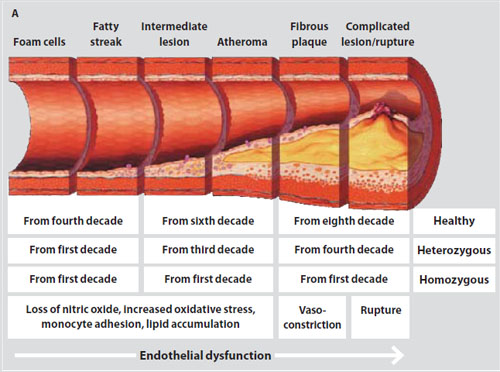Skip to content

- The risk of premature CHD is elevated by at least 10-fold in untreated FH patients.
- In FH, plasma LDL cholesterol concentrations are elevated from birth and can lead to an accelerated formation of foam cells and atherosclerotic plaques. The coronary arteries and proximal aorta are particularly affected.
- The development of atherosclerosis is proportional to the degree of elevation in LDL cholesterol concentration and to the duration of exposure to the untreated high levels of LDL cholesterol. Hence, development of atherosclerosis is much higher in homozygous FH than in heterozygous FH.
- Individuals with FH have a very high lifetime risk of CHD and are at very high risk of premature CHD. Left untreated,
- at least 50% of men with heterozygous FH are likely to have a cardiovascular event by age 50
- at least 30% of women with heterozygous FH are likely to have a cardiovascular event by aged 60
- homozygous FH tends to exhibit supravalvular aortic stenosis and aggressive coronary atherosclerosis by age 25.
- FH is both under diagnosed and undertreated worldwide, in spite of being an easily treatable condition. In Australia it is estimated that 77,000 people have FH of which 80% (that is 61,000 people) have not yet been diagnosed.


